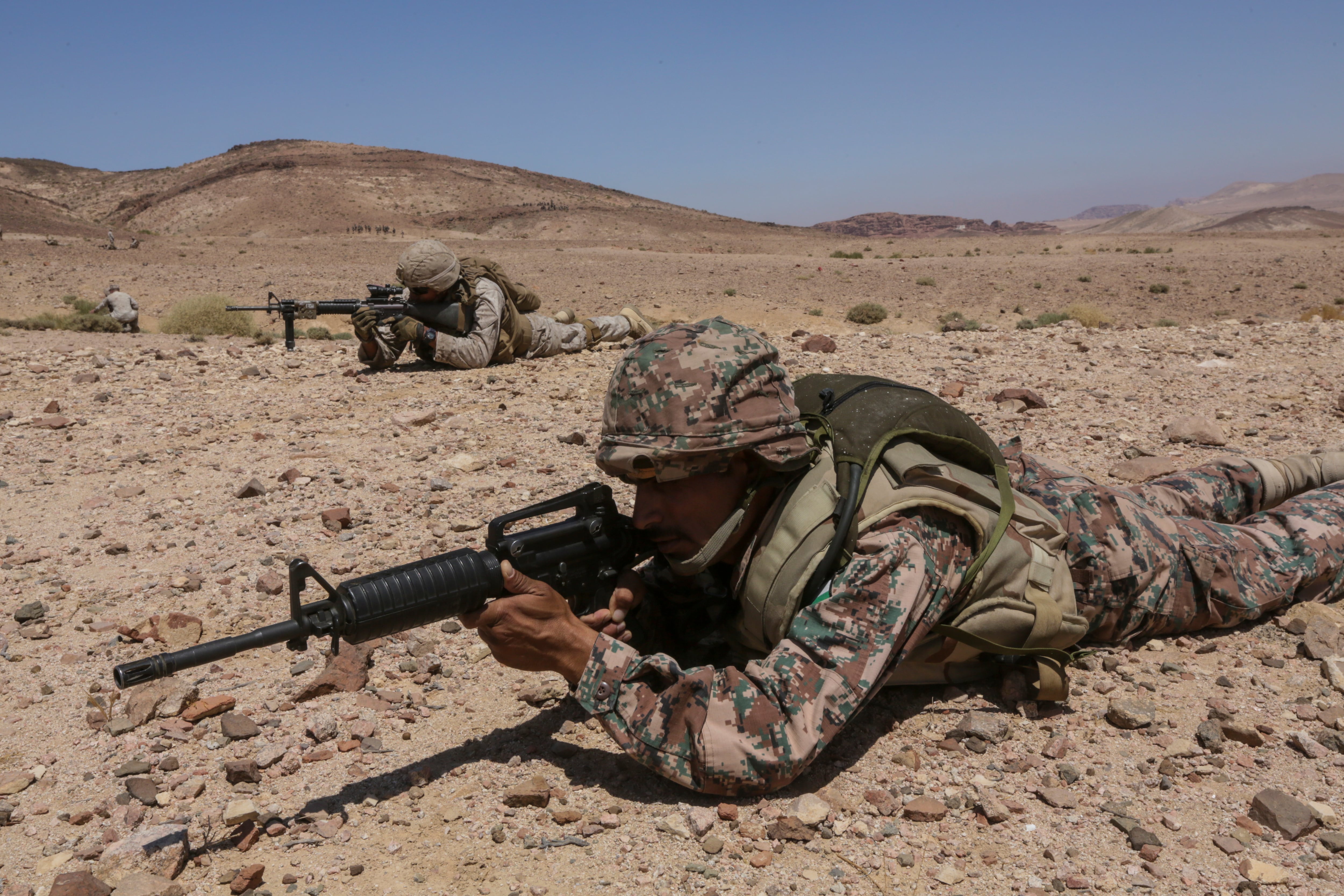While military operations against the Islamic State group intensified this last summer, the U.S. Marine Corps quietly worked to bolster a key ally in the fight.
During their six-month deployment to the region, troops from 3rd Battalion, 7th Marines worked side-by-side with Jordanian troops to train the kingdom's elite 77th Marine Reconnaissance Battalion and help stand up a brand-new, quick-reaction force.
The Marines were part of the 2,300-strong Special Purpose Marine Air-Ground Task Force — Crisis Response — Central Command 15.2, led by Col. Jay Bargeron during its six-month deployment from March to October. It was the second iteration of the Marine's rotational, flexible crisis-response force for the region.
The quick-reaction force is a new Jordanian unit specifically designed to react to threats along the kingdom's borders, said Bargeron, who also commands 7th Marines.
Jordan has been trying to beef up security and surveillance along its border with Syria since the conflict began there in 2011.
"These forces need to be trained to respond on a short notice, go into a position, defend that position and sustain themselves for three or four days," Bargeron told Marine Corps Times at a Pentagon press roundtable Wednesday. "That's right up the Marine Corps' alley: a forward-deployed, expeditionary force ready to go."
The Marine Corps brings the right skills to the table for this, Bargeron said.

Jordanian Soldiers and U.S. Marines with India Company, Battalion Landing Team 3rd Battalion, 1st Marine Regiment, 15th Marine Expeditionary Unit, provide security during a bilateral training exercise on Aug. 25. The 15th MEU is deployed throughout Southwest Asia to maintain regional security in the U.S. 5th Fleet area of responsibility.
Photo Credit: (Sgt. Jamean Berry/Marine Corps)
"The skills that go with [an expeditionary force] are primarily infantry skills, which we're good at: at the squad level, at the platoon level and at the company level," he said. "So that's what we provided: basic infantry skills and maintaining a level of readiness that would support that tasking from their government."
The months spent training alongside the Jordanians culminated in a combined live-fire and large-unit-maneuver exercise in September with elements from the 5th Marine Expeditionary Brigade, 15th Marine Expeditionary Unit, the Jordanian 77th Marine Battalion and the new Jordanian quick reaction force.
The first-of-its-kind exercise tested how well MEUs and MAGTFs can work together with allied partners, and it allowed the Jordanians to prove how well its new QRF can perform.
The Jordanian mission was just one part of the task force's high-tempo, distributed operations across the region. MAGTF Marines conducted daily airstrikes against the Islamic State, moved 2.8 million pounds of cargo, provided around-the-clock tactical recovery of aircraft and personnel, and crisis response teams, beefed up the U.S. Embassy in Baghdad, and stood up a new training site — Camp Manion — at al Taqaddum Air Base. The Marines trained Iraqi security forces there and at al Asad, and engaged in joint military training with America's partners in the region, such as Jordan.
In addition to the ground combat element provided by 3rd Battalion, 7th Marines, out of Twentynine Palms, California, the 15.2 rotation also included an air combat element of F/A-18s Hornets, MV-22s Ospreys and KC-130J Super Hercules from the 3rd Marine Aircraft Wing out of Marine Corps Air Station Miramar, San Diego, California, as well as Combat Logistics Battalion 7, also from Twentynine Palms.The task force concluded its deployment on Oct. 20 after turning the reins over to the rotational force’s third iteration, SPMAGTF-CR-CC 16.1.




